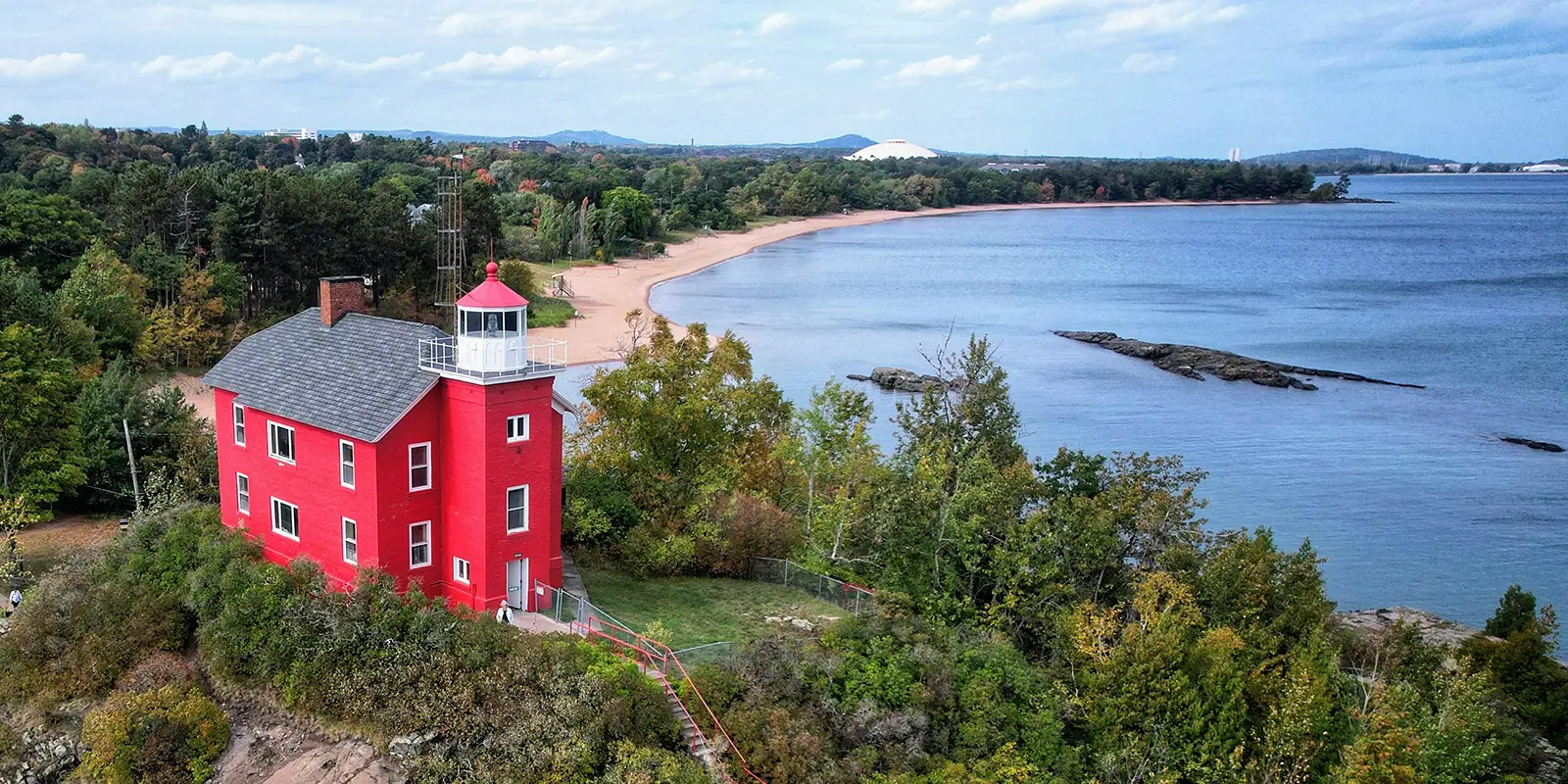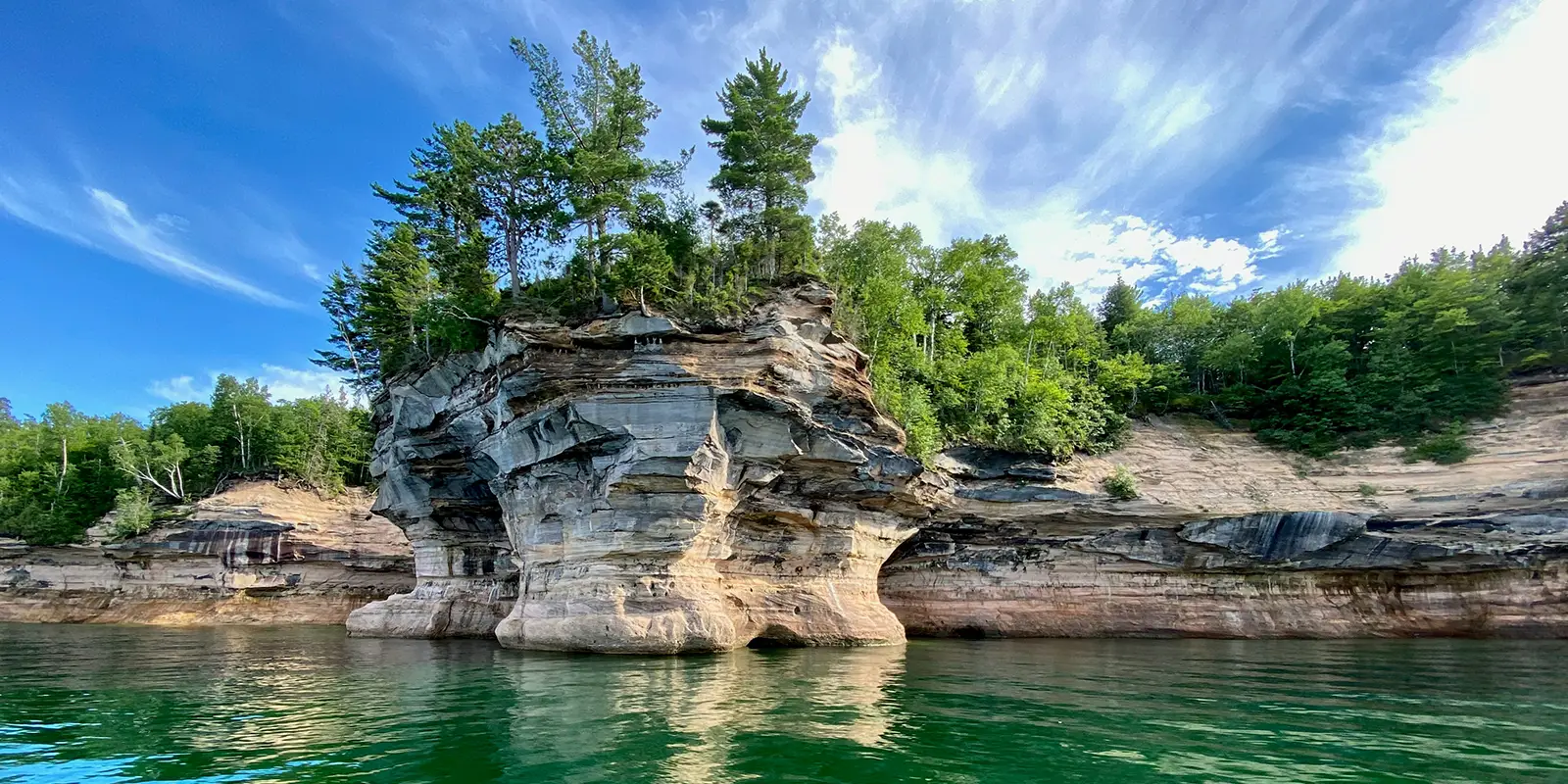Lake Superior, the largest of the Great Lakes of North America, holds within its vast expanse a world of wonders. From its sheer size and remarkable depth to the diverse wildlife that calls its waters home, Lake Superior offers a plethora of opportunities for adventure and discovery.
Lake Superior Size & Depth
Stretching across an area of approximately 31,700 square miles, Lake Superior reigns as the largest freshwater lake by surface area in the world. Its vastness is awe-inspiring, often likened to an inland sea due to its sheer size. Lake Superior’s vast size can be attributed to a combination of factors, including its glacial origins and geological history. During the last Ice Age, massive glaciers sculpted the landscape of the region, carving out deep basins that would later become the Great Lakes. As the glaciers retreated, meltwater filled these basins, forming the expansive bodies of water we see today.
The Ojibwe people, who have inhabited the region surrounding Lake Superior for centuries, refer to the lake as “Gitche Gumee,” meaning “great sea” or “big water.” This name holds deep spiritual and cultural significance in Ojibwe culture.
Lake Superior stands out not only for its vastness but also for its remarkable depth. Plummeting to depths of up to 1,332 feet, Lake Superior holds the title of the deepest of the Great Lakes. The deepest spot in Lake Superior lies near the international border separating the United States and Canada, roughly 40 miles north of Munising, Michigan.
Wildlife of Lake Superior
Lake Superior abounds with diverse wildlife, thriving both on its surface and beneath its glistening waters. Within the Lake Superior region, a variety of mammal species capture attention, among them black bears, gray wolves, moose, and lynx. Additionally, notable mammals such as white-tailed deer, beavers, and otters contribute to the area’s biodiversity.
Some of these mammals, such as wolves and bears, are more elusive.
The lake provides habitat for numerous bird species, both resident and migratory. Common birds include bald eagles, ospreys, common loons, herring gulls, great blue herons, and various species of ducks and geese. The lake’s shoreline and nearby wetlands are important breeding and nesting grounds for many of these birds.
Numerous fish species inhabit the waters of the lake, alongside a selection of reptiles. Lake Superior is home to lake trout, various types of salmon (such as chinook, coho, and pink), whitefish, walleye, and northern pike. Among these, the sea lamprey reigns as the largest predator, accompanied by other notable predators like lake trout, northern pike, muskellunge, and the elusive lake sturgeon. Additionally, the lake is home to various reptiles, including painted turtles, snapping turtles, frogs (such as green frogs and bullfrogs), salamanders, and several snake species like the eastern garter snake.

Things To Do At Lake Superior
Lake Superior is bordered by three states: Minnesota to the west, Wisconsin to the south, and Michigan to the north and east. Each state offers its own unique attractions and experiences, from scenic state parks to charming lakeside communities.
Minnesota
Minnesota provides superb hiking and camping options, courtesy of the expansive Superior National Forest. The renowned Superior Hiking Trail offers breathtaking vistas of Lake Superior and the surrounding inland forests. Superior National Forest boasts numerous lakes, providing ample opportunities for kayaking and canoeing. Paddling on the lake itself is popular along the lake’s North Shore, with options for guided tours and rentals. Exploring the North Shore Scenic Drive is a must-do, featuring stops at Gooseberry Falls State Park and Split Rock Lighthouse.
Wisconsin
Although Wisconsin’s portion of the Lake Superior shoreline is the smallest, it’s brimming with attractions. Numerous islands dot Wisconsin’s shore, offering ample opportunities for exploration, especially among the sea caves of the Apostle Islands, which are popular for kayaking and canoeing. The Apostle Islands Maritime Cliffs State Natural Area offers tours showcasing historic lighthouses. Madeline Island is a top destination for fishing trout and salmon.
Michigan
Michigan is home to Pictured Rocks National Lakeshore, an unparalleled destination along its stretch of Lake Superior. Boat tours provide an ideal opportunity for visitors to admire the vibrant sandstone cliffs and beautiful waterfalls. While swimming is feasible in all three states, the Pictured Rocks region stands out as a preferred choice. However, it’s important to note that the water will be chilly.







